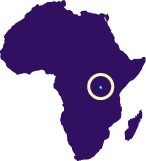|
Why does Rwanda occupy such a high GEI position? Its surprisingly good performance is related to the recent implementation of affirmative action policies involving legally binding regulations, sometimes of a constitucional nature, designed to promote change in social factors, including structural ones.
The following are examples of rapid changes that have taken place in this country over recent years:
- 30% of decision-making related positions were assigned to women;
- local funds and micro-credits were provided for production projects led by women;
- in 2003 Article 187 of the new Rwandan Constitution formalised equity promotion structures such as the National Council of Women;
- a Gender Issues Monitoring Office was created, to facilitate the participation of women in public life and to ensure that development initiatives are egalitarian in generating benefits for both sexes.
As a result of these changes many women entered public life as political leaders. In the Chamber of Deputies seats held by women increased to 48.8%. There was also a significant increase in the participation of women at ministerial and local government levels.
The most interesting conclusion to be made is that a high level of economic development is not necessary in order to implement effective gender inequity reduction measures.
GEI Rwanda
|
Empowerment
|
|
Gaps
|
Professionals and Technicians Gap
|
Managers and Directors Gap
|
Parliamentarians Gap
|
Ministerial Gap
|
Empowerment gender gap
|
|
2004
|
no data
|
no data
|
96
|
05
|
50
|
|
2007
|
no data
|
no data
|
95
|
67
|
81
|
|
Economic activity
|
|
Gaps
|
Activity rate gap
|
Income gap
|
Economic activity gender gap
|
|
2004
|
88
|
no data
|
88
|
|
2007
|
95
|
74
|
85
|
|
Education
|
|
Gaps
|
Literacy gap
|
Primary enrolment gap
|
Secondary enrolment gap
|
Tertiary enrolment gap
|
Education gender gap
|
|
2004
|
96
|
89
|
no data
|
50
|
78
|
|
2007
|
98
|
100
|
no data
|
62
|
87
|
key measures and areas of action
Social Watch Gender Equity Index
Recent GEI trends (2004-2007)
GEI values in 2007
|




